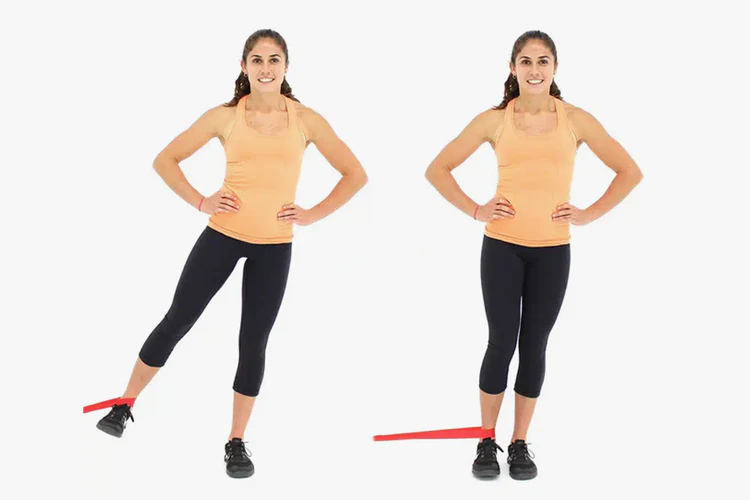If you’re looking to improve your lower body strength, stability, and overall mobility, understanding the benefits of hip adduction and abduction exercises is essential. These targeted movements focus on strengthening the inner and outer thigh muscles, which play a crucial role in hip stability, balance, and injury prevention. In this comprehensive guide, we’ll explore what hip adduction and abduction exercises are, their key benefits, how they improve athletic performance and daily function, and practical ways to incorporate them into your fitness routine.
What Are Hip Adduction and Abduction Exercises?
Hip adduction and abduction refer to movements of the leg relative to the body’s midline:
- Hip Adduction is the movement of bringing the leg inward toward the midline of the body. This action primarily targets the inner thigh muscles, known as the hip adductors.
- Hip Abduction is the movement of moving the leg away from the midline, engaging the outer thigh muscles, especially the hip abductors.
Both types of exercises are vital for balanced hip muscle development, which supports proper posture, joint health, and functional movement.
The Benefits of Hip Adduction and Abduction Exercises
1. Improved Hip Stability and Balance
The muscles involved in hip adduction and abduction stabilize the pelvis and hip joint during activities such as walking, running, and standing on one leg.
- Hip abductors like the gluteus medius and minimus prevent the pelvis from dropping on the opposite side during single-leg stance.
- Hip adductors help maintain alignment and control leg movement during dynamic activities.
Strengthening these muscles reduces the risk of falls and improves overall balance, especially important for older adults and athletes.
2. Injury Prevention and Pain Reduction
Weakness or imbalance in hip adductors and abductors can contribute to common injuries such as:
- Knee valgus (knock knees): Often caused by weak hip abductors, leading to improper knee alignment and increased injury risk.
- Iliotibial (IT) band syndrome: Tightness or weakness in hip muscles can cause friction and pain on the outer thigh.
- Groin strains: Strengthening the hip adductors reduces the likelihood of groin injuries, common in sports involving quick lateral movements.
Regular hip adduction and abduction exercises can alleviate and prevent lower back, hip, and knee pain by improving muscular support and joint mechanics.
3. Enhanced Athletic Performance
For athletes, strong hip adductors and abductors contribute to:
- Explosive lateral movements: Crucial in sports like soccer, basketball, and tennis.
- Improved running mechanics: Balanced hip strength supports efficient stride and reduces compensatory injuries.
- Better agility and speed: Hip stability aids in quick direction changes and balance during high-intensity activities.
Studies show that targeted hip abductor-adductor training improves neuromuscular control and power, enhancing performance and reducing injury risk.
4. Better Posture and Functional Movement
Hip muscles influence pelvic alignment, which affects posture and spinal health.
- Strengthening these muscles supports proper pelvic tilt and reduces compensatory strain on the lower back.
- Improved hip control aids in daily activities such as climbing stairs, standing up from a chair, and walking.
5. Muscle Toning and Aesthetic Benefits
Hip adduction and abduction exercises help tone the inner and outer thighs, contributing to a more sculpted and balanced lower body appearance.
Key Muscles Targeted by Hip Adduction and Abduction Exercises
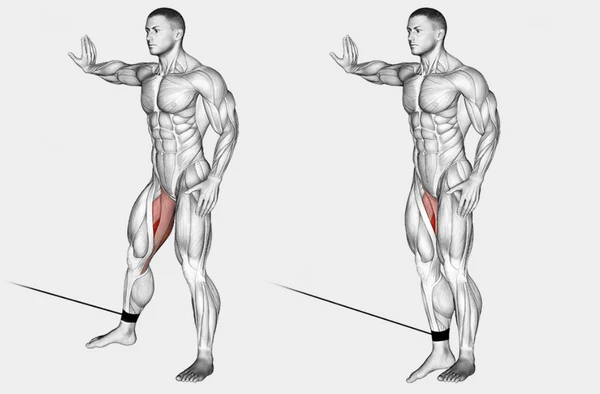
Hip Abductors
- Gluteus medius
- Gluteus minimus
- Tensor fasciae latae (TFL)
These muscles move the leg outward and stabilize the pelvis.
Hip Adductors
- Adductor magnus
- Adductor longus
- Adductor brevis
- Pectineus
- Gracilis
These muscles pull the leg inward and assist with hip stabilization.
Effective Hip Adduction and Abduction Exercises
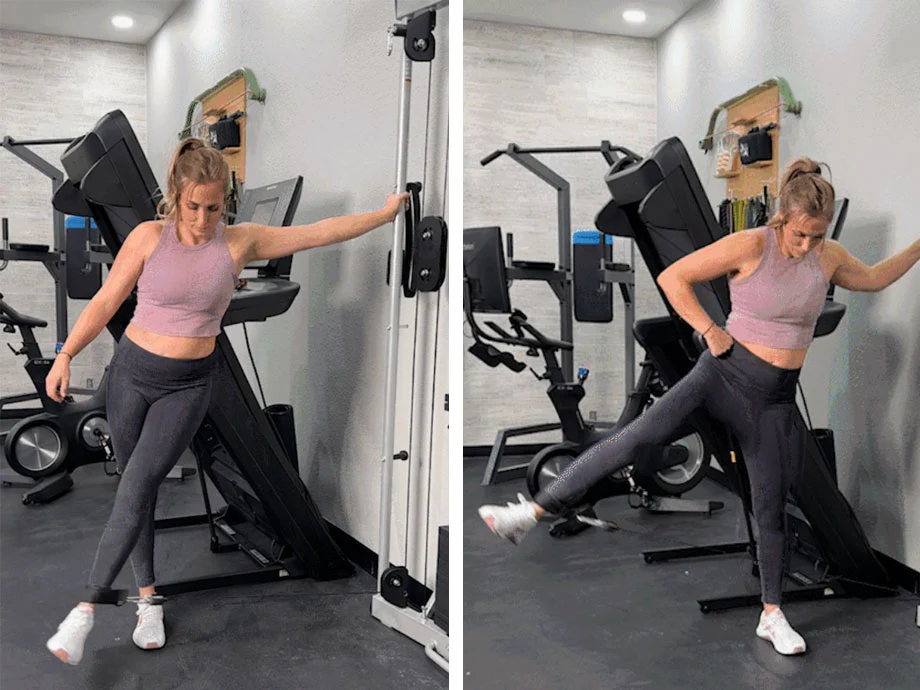
Hip Abduction Exercises
- Side-Lying Leg Raises: Lie on your side and lift the top leg upward slowly.
- Clamshells: Lie on your side with knees bent, open and close your knees like a clamshell.
- Banded Side Steps: Place a resistance band around your legs and step sideways.
- Standing Hip Abduction: Stand straight and lift one leg to the side, keeping your torso stable.
Hip Adduction Exercises
- Side-Lying Hip Adduction: Lie on your side with the bottom leg straight and lift it toward the midline.
- Standing Hip Adduction with Band: Attach a resistance band to your ankle and pull your leg inward.
- Seated Hip Adduction Machine: Use gym equipment designed to target inner thigh muscles.
- Ball Squeeze: Sit or lie down and squeeze a ball between your knees.
How to Incorporate Hip Adduction and Abduction Exercises Into Your Routine
For Beginners
- Start with bodyweight exercises like side-lying leg raises and clamshells.
- Perform 2-3 sets of 10-15 repetitions on each side.
- Focus on slow, controlled movements to engage the correct muscles.
For Intermediate and Advanced
- Add resistance bands or ankle weights to increase difficulty.
- Incorporate machines at the gym for targeted strengthening.
- Combine with compound lower body exercises like squats and lunges for overall strength.
Sample Weekly Plan
| Day | Exercise Focus | Sets & Reps |
|---|---|---|
| Monday | Hip Abduction (banded steps) | 3 sets of 15 reps each side |
| Wednesday | Hip Adduction (ball squeeze) | 3 sets of 15 reps |
| Friday | Combined Abduction & Adduction | 3 sets of 12-15 reps each |
Common Mistakes to Avoid
- Using Momentum: Swinging the leg instead of controlled movement reduces effectiveness.
- Neglecting Both Sides: Ensure balanced training on both legs to prevent imbalances.
- Ignoring Core Engagement: A stable core supports hip function and prevents compensations.
- Overtraining: Allow muscles time to recover to avoid fatigue and injury.
Who Can Benefit Most from Hip Adduction and Abduction Exercises?
- Athletes: To improve performance and reduce injury risk.
- Older Adults: To maintain balance and prevent falls.
- People with Knee or Hip Pain: To strengthen stabilizing muscles and alleviate discomfort.
- Anyone Seeking Lower Body Toning: For aesthetic and functional benefits.
The Role of Hip Adduction and Abduction Exercises in Rehabilitation and Injury Recovery
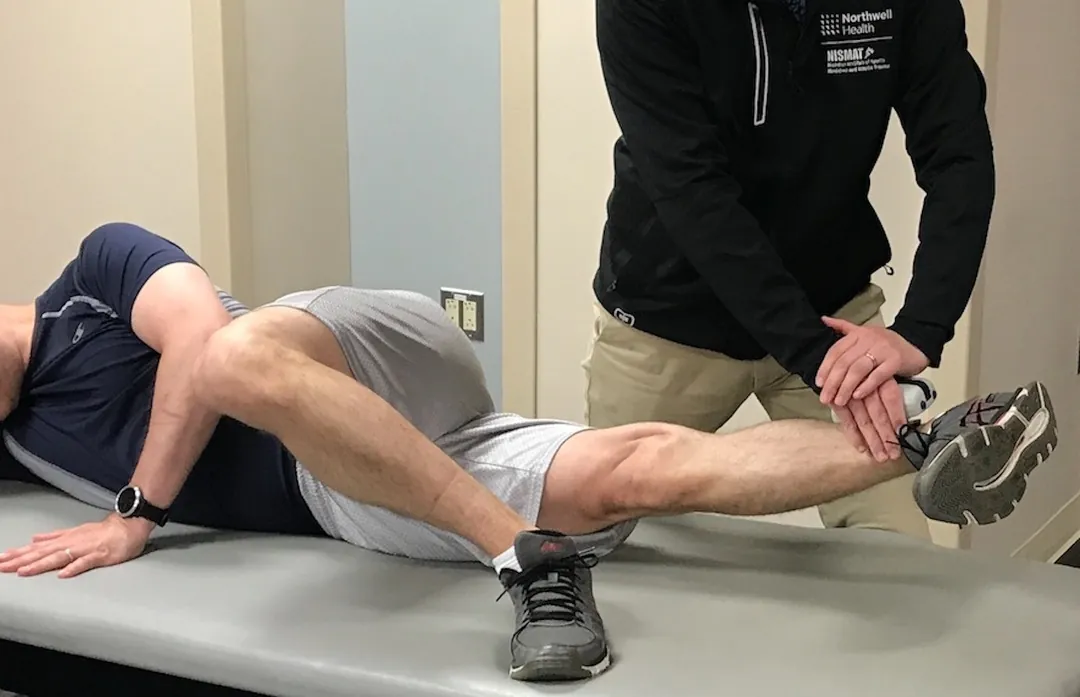
Hip adduction and abduction exercises are often prescribed during rehabilitation following injuries or surgeries involving the hip, knee, or lower back. Their role in recovery is crucial for restoring function and preventing future injuries.
Rehabilitation After Hip or Knee Surgery
- Post-Operative Strengthening: After surgeries like hip replacements or ACL reconstructions, targeted hip exercises help rebuild muscle strength and joint stability.
- Improved Joint Mobility: Controlled hip movements prevent stiffness and promote healthy joint lubrication.
- Enhanced Neuromuscular Control: These exercises retrain muscles to coordinate properly, reducing abnormal movement patterns that can cause pain or re-injury.
Managing Lower Back Pain
Weak hip abductors and adductors can contribute to poor pelvic alignment, which places extra strain on the lumbar spine.
- Strengthening these muscles supports pelvic stability, reducing lower back discomfort.
- Hip strengthening is often integrated into physical therapy programs for chronic lower back pain sufferers.
Preventing Overuse Injuries in Athletes
Athletes recovering from groin strains, IT band syndrome, or hip flexor injuries benefit from gradual strengthening of the hip muscles to restore balance and prevent recurrence.
How Hip Adduction and Abduction Exercises Influence Pelvic Alignment and Gait Mechanics
Pelvic alignment is a key factor in efficient movement and injury prevention. Hip muscles play a pivotal role in maintaining proper pelvic position during dynamic activities.
Pelvic Stability and Its Importance
- The pelvis acts as the foundation for the spine and lower limbs.
- Balanced hip adductors and abductors prevent excessive pelvic tilt or rotation.
- Proper pelvic alignment reduces compensatory stresses on the knees, ankles, and lower back.
Impact on Walking and Running Mechanics
- During gait, hip abductors stabilize the pelvis on the stance leg, preventing the opposite side from dropping.
- Hip adductors control leg movement during the swing phase, ensuring smooth and efficient strides.
- Weakness or imbalance can lead to altered gait patterns, increasing injury risk and reducing performance.
Practical Example: Correcting Trendelenburg Gait
- Trendelenburg gait, characterized by pelvic drop on the non-weight-bearing side, often results from weak hip abductors.
- Targeted abduction exercises can strengthen these muscles, restoring normal gait and reducing associated pain.
The Connection Between Hip Muscle Strength and Athletic Agility
Agility—the ability to change direction quickly and efficiently—is essential in many sports. Hip adduction and abduction exercises enhance this ability by improving lateral movement control.
How Hip Strength Enhances Agility
- Strong abductors enable quick side-to-side movements and stabilize the pelvis during rapid changes.
- Adductors contribute to powerful inward movements and maintain balance during cutting maneuvers.
- Together, they support dynamic stability, reducing the risk of falls and injuries during high-speed activities.
Training Drills to Improve Agility
- Lateral Cone Drills: Sprint laterally around cones to train hip muscles and coordination.
- Shuttle Runs: Quick forward and backward sprints combined with lateral movements.
- Agility Ladder Drills: Incorporate side steps and crossover steps to engage hip muscles actively.
The Impact of Hip Adduction and Abduction on Postural Control and Core Stability
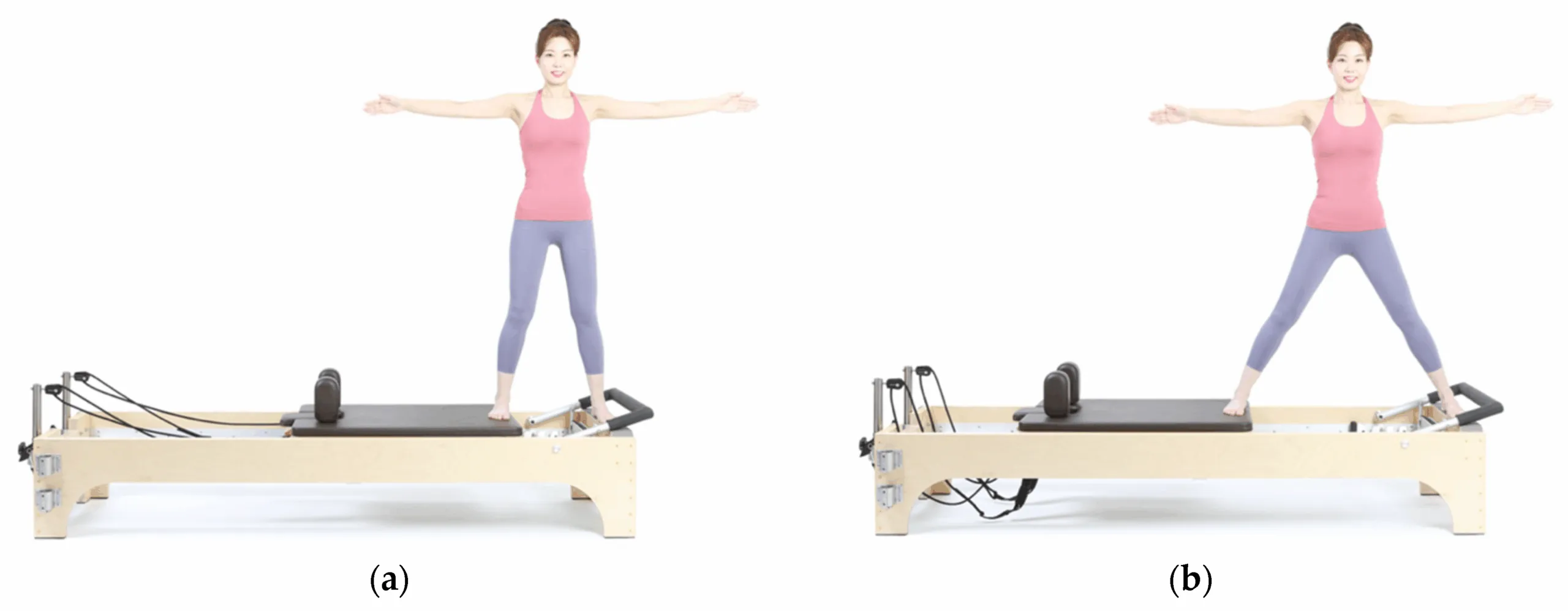
While often thought of as isolated lower body exercises, hip adduction and abduction movements are deeply connected to overall postural control and core stability.
Integration with Core Muscles
- The hip muscles work synergistically with the abdominal and lower back muscles to stabilize the pelvis and spine.
- Strengthening hip abductors and adductors improves the foundation upon which the core operates.
- This integrated stability supports better posture, reduces compensatory movements, and enhances balance.
Benefits for Sedentary Individuals and Desk Workers
- Prolonged sitting weakens hip muscles, leading to poor posture and lower back pain.
- Incorporating hip adduction and abduction exercises combats muscle imbalances caused by sedentary lifestyles.
- Improved hip and core stability reduces discomfort and enhances daily function.
Advanced Hip Adduction and Abduction Exercises for Strength and Power
Once basic strength and control are established, progressing to advanced exercises can further enhance muscle power and functional performance.
Resistance Band Progressions
- Use heavier resistance bands or cables to increase load during side steps, leg lifts, or adduction pulls.
- Incorporate dynamic movements like lateral band walks with added speed or resistance.
Weighted Machine Exercises
- Hip abduction and adduction machines allow for controlled, progressive overload.
- Focus on slow, deliberate movements with full range of motion to maximize muscle engagement.
Plyometric and Functional Movements
- Lateral Bounds: Jump side to side, landing softly to engage hip stabilizers dynamically.
- Single-Leg Deadlifts: Challenge balance and hip control while strengthening posterior chain.
- Skater Hops: Mimic skating motion to develop lateral power and coordination.
The Role of Hip Adduction and Abduction Exercises in Women’s Health
Hip muscle strength has particular importance in women’s health, especially related to pelvic floor function, pregnancy, and postpartum recovery.
Supporting Pelvic Floor Health
- Strong hip adductors and abductors contribute to pelvic floor muscle function.
- These muscles assist in maintaining continence and pelvic organ support.
- Exercises targeting the hips can complement pelvic floor rehabilitation.
Pregnancy and Postpartum Benefits
- During pregnancy, hormonal changes loosen ligaments around the pelvis, increasing instability.
- Strengthening hip muscles helps maintain pelvic alignment and reduces lower back and pelvic pain.
- Postpartum, hip exercises aid in regaining strength and stability lost during pregnancy and delivery.
How to Track Progress and Measure Effectiveness of Hip Adduction and Abduction Training
Tracking your progress ensures you’re gaining strength and improving function effectively.
Methods to Track Progress
- Repetition Maximum (RM): Gradually increase the number of reps or resistance used.
- Range of Motion: Monitor improvements in hip mobility during exercises.
- Functional Tests: Assess balance, single-leg stance time, or agility drills.
- Pain and Discomfort Levels: Note reductions in joint or muscle pain during daily activities.
Using Technology
- Fitness apps and wearable devices can help log workouts and track improvements.
- Video recordings can assist in analyzing form and technique for corrections.
Final Thoughts: The Benefits of Hip Adduction and Abduction Exercises
The benefits of hip adduction and abduction exercises extend far beyond simple muscle strengthening. They improve hip stability, reduce injury risk, enhance athletic performance, and support everyday movements. Incorporating these exercises into your fitness routine can lead to better posture, reduced pain, and a stronger, more balanced lower body.
